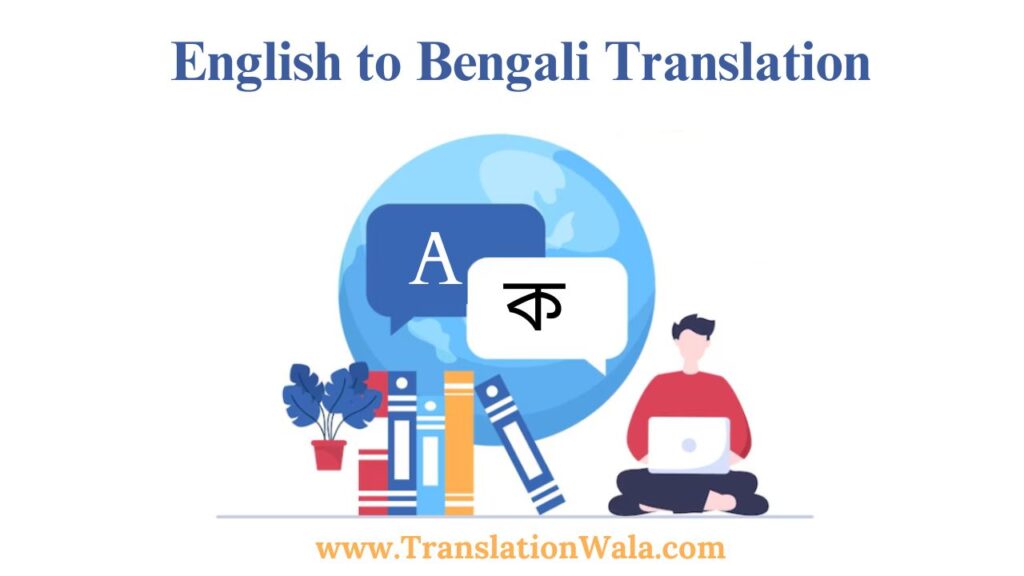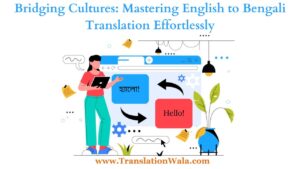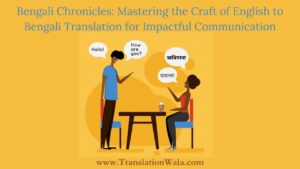Have you ever been mesmerized by a translated Rabindranath Tagore book or a Bengali poem? You might want to bridge the gap between Bengali and the language you’re learning. No matter the reason, English to Bengali Translation can be a rewarding experience. But how do you start? Please use this blog post as a guide to help you understand the complicated steps involved in translating.
Understanding the Cultural Landscape
Language is more than just words; it shows how people live. Before you start translating, it’s important to know how the cultures of English and Bengali work. Here are a few important signs of difference:
- Collectivism vs. Individualism: Bengali society is more collectivist and values getting along with others. English society, on the other hand, values individuality and freedom of speech. This might change the way thoughts are shared.
- Directness vs. Indirectness: Bengali language conversation can be more vague, depending on the situation and what is being said. English is more direct most of the time. For the information to be clear, the translation needs to know when to change it.
- Humor and Idioms: A lot of jokes and idioms come from cultural events. If you translate something literally, you might miss the joke or the point. It is important to find suitable Bengali counterparts.
Equivalence: The Heart of Translation
Equivalence is the most important idea in translation. It’s not as simple as changing words with their meanings from the book. It’s about getting across the original meaning and purpose in a way that the Bengali audience can understand. To help you think about similarity, here are some different kinds:
- Formal equivalence: This is mostly about keeping the source text’s grammar and word order. But it might sound strange in the target tongue sometimes.
- Dynamic equivalence: This puts getting the main idea and effect of the text across first, even if that means changing the order of words or finding more culturally suitable ones.
- Functional equivalence: This makes sure that the translated text does the same thing as the source. For instance, an English article that wants to persuade might need a more emotional tone in Bengali to really do that.
Also Read: Language Harmony: Expert English to Gujarati Translation

The Translator’s Toolkit: Essential Resources
Equivalence can be hard to figure out, but don’t worry! There are a lot of tools that translators can use:
- Dictionaries: You should have bilingual books because they help you choose words. On the other hand, depending only on rules can be wrong.
- Corpus Tools: You can see how words and sentences are used in everyday Bengali with these free tools. To make sure your versions sound normal, do this.
- Style Guides: Style guides make sure that words are used consistently and that documents sound skilled in certain areas, like court documents or technical instructions.
- Glossaries: Making a dictionary of important words in both languages can be very helpful when you’re translating a specialized text.
Beyond Words: The Art of Adaptation
There are times when a straight English to Bengali Translation just won’t work. Think about these situations:
- Puns and wordplay: These depend on certain sounds or word connections that Bengali might not have. The interpreter might have to use different methods to repeat the humor.
- Cultural references: Bengali readers might not know about references to past events, people, or even everyday things. The translation may need to give more information or find a similar word.
- Figurative language: Idioms, metaphors, and similes can be beautiful, but they are also regionally unique. The translator has to find common Bengali words that mean the same thing as the English words.
Machine Translation vs. Human Expertise
You might be wondering if human interpreters are going out of style now that machine translation (MT) tools are so popular. Even though MT can be useful for some easy jobs, it often has trouble learning how language and culture work.
Human writers, on the other hand, can change the meaning, come up with creative solutions, and make sure the text goes smoothly. They can also deal with tricky grammar and symbolic language that MT tools often fail to understand.
Conclusion: The Bridge Between Languages
English to Bengali Translation is a fun thing to do. It helps people from different countries talk to each other and share their thoughts with more people. You can become a good translator by learning about culture differences, using different kinds of similarity, and getting the right tools. This will help people understand and appreciate both languages. Always keep in mind that translation is both an art and a science. So, take on the task, let your imagination run wild, and start your journey to find meaning!



